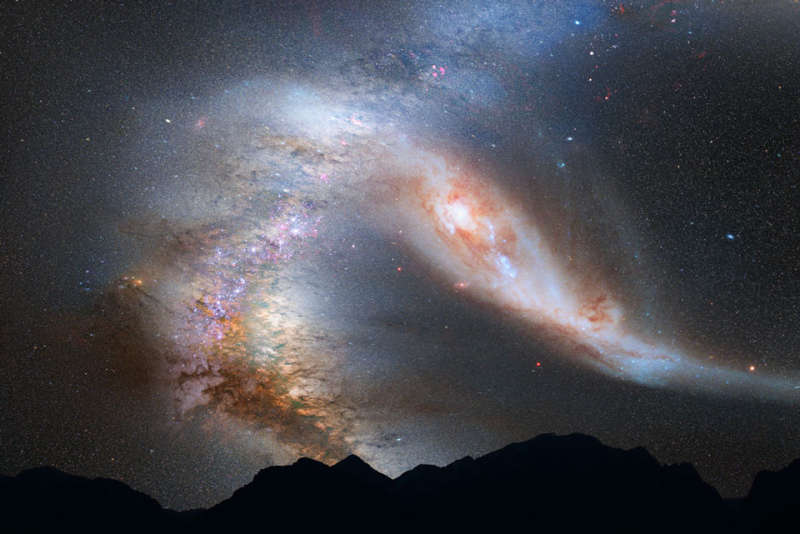
|
Explanation: Will our Milky Way Galaxy collide one day with its larger neighbor, the Andromeda Galaxy? Most likely, yes. Careful plotting of slight displacements of M31's stars relative to background galaxies on recent Hubble Space Telescope images indicate that the center of M31 could be on a direct collision course with the center of our home galaxy. Still, the errors in sideways velocity appear sufficiently large to admit a good chance that the central parts of the two galaxies will miss, slightly, but will become close enough for their outer halos to become gravitationally entangled. Once that happens, the two galaxies will become bound, dance around, and eventually merge to become one large elliptical galaxy -- over the next few billion years. Pictured above is an artist's illustration of the sky of a world in the distant future when the central parts of each galaxy begin to destroy each other. The exact future of our Milky Way and the entire surrounding Local Group of Galaxies is likely to remain an active topic of research for years to come.
Partial Lunar Eclipse
Tonight:
Gallery of photogenic
past lunar eclipses
|
January February March April May June July August September October November December |
| ||||||||||||||||||||||||||||||||||||||||||||||||
NASA Web Site Statements, Warnings, and Disclaimers
NASA Official: Jay Norris. Specific rights apply.
A service of: LHEA at NASA / GSFC
& Michigan Tech. U.
Based on Astronomy Picture
Of the Day
Publications with keywords: Milky Way - Andromeda - M 31
Publications with words: Milky Way - Andromeda - M 31
See also:
- Andromeda and Friends
- APOD: 2025 August 6 Á Meteor before Galaxy
- APOD: 2025 July 2 Á Milky Way Through Otago Spires
- APOD: 2025 May 20 Á Milky Way over Maunakea
- APOD: 2025 May 13 Á Gaia Reconstructs a Top View of our Galaxy
- APOD: 2025 May 12 Á Gaia Reconstructs a Side View of our Galaxy
- Galaxies in Space
